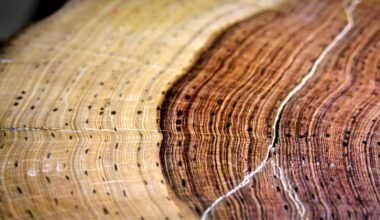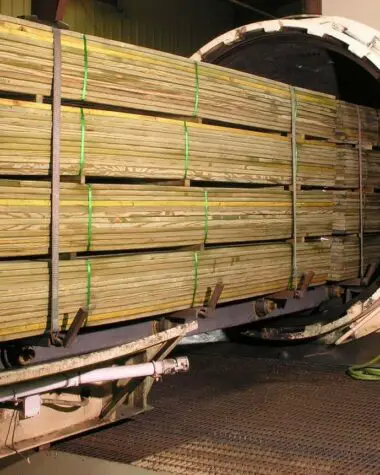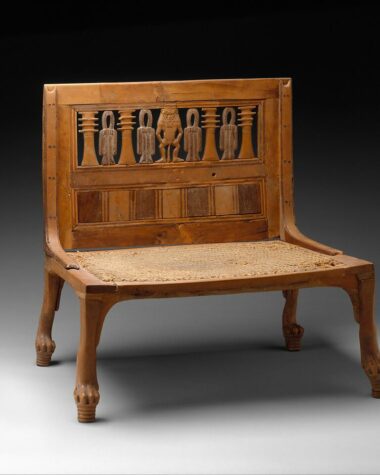Would you believe that ideas from ancient woodwork inspire most modern wooden structures we admire today? One of the interesting parts of exploring wood is looking at its historical accounts. As a common notion says, “to learn about the present is to find out what happened in the past,” we need to revisit what transpired back then. As far as wood is concerned, we are your narrator to retell ancient stories useful in your wood exploration.
The History
Woods come from trees, and this natural resource was used as primitive weapons for hunting and defense. Additionally, it was also used to build tools to make all kinds of structures and decorative pieces. Woods allowed ancient civilizations to build strong and durable shelters in different parts of the world.
As man’s ability to work with wood increased, he made increasingly complex weapons to hunt animals for sustenance, clear ground for farming, and construct furniture for his home. He was able to build bigger, more durable boats to travel and catch with the help of his newly discovered skills. He could now look for food further because he was no longer restricted to a specific location.
The Story From the Bible
The first significant wooden building in history is described in the Bible. In the Book of Genesis, Noah built the wooden ark according to God’s command. According to the story, the ark is said to be made out of gopher wood.
The Bible only uses the term “gopher” once. In Genesis 6:14, God told Noah to “build yourselves an ark of gopher wood.” No one nowadays is aware of what gopher wood is. However, some theories consider gopher wood cypress wood because of its extreme durability.
The extraordinary resilience of gopher wood has led many modern researchers to link it to cypress wood. Gopher wood is translated as “cypress wood” in contemporary English translations of the Bible, including the New International Version (NIV), the New Living Translation (NLT), and the New English Translation (NET).
On the other hand, gopher wood resembles “any trees of the resinous sort, like as pine, fir, or cypress,” according to the Smith Bible Dictionary. However, there are a few factors to consider when identifying the precise tree mentioned in the biblical passage.
There is a high likelihood that everything used in the ark was also destroyed by the great flood that occurred during Noah’s time. Some academics think the term “gopher” doesn’t describe a type of wood. Instead, they think it’s a method for getting the wood ready to build the ark.
Given the enormous size and weight of the ark, some archaeologists believe that the gopher may have been referring to a lamination procedure used to increase the wood’s stability.
The Ancient Wood Story from the Middle Ages
During the Middle Ages, carpenters and woodworkers were among the most successful tradespeople. Their craftsmanship was in great demand for the construction of houses, fences, tools, boats, carriages, and furniture.
Carpenters belonged to specific organizations known as guilds, which were created to safeguard the interests of various professions. During this time, training programs for aspiring carpenters began. Carpenters needed fundamental trade abilities, such as algebra and woodworking, and their talent and expertise.
Almost everywhere in the Middle Ages was made of wood. Wood was extensively employed in the interior and exterior spaces for creating homes, buildings, and other constructions. It was primarily employed in constructing floors, doors, window frames, roof beams, and more.
During this period, woodworkers were also adept at producing beautiful figures and statues. Even now, research and use of the methods used to create these exquisite ornamental things continue. These were also employed to produce furniture and structural elements with Byzantine or Gothic influences. At this time, woodworkers were skilled and persevering in honing and sharing their expertise.
The Ancient Egyptian Wood Story
Egypt is not only popular for the pyramids but also for stories about their development in the use of wood. There is proof that they were experts in using wood to make different kinds of furniture. The early Egyptians used wood to make beds, stools, tables, and chairs.
Furthermore, they utilized wood to craft chests, home furnishings, and unique wooden ornaments. Pictures of ancient Egyptians from the year 2000 BC have been found, illustrating how they employed wood for furniture, caskets, and coffin construction.
Ancient Egyptian woodworkers produced more than simple wooden furniture and ornamentation. They also continually practiced their abilities and developed new methods. The Egyptians created the skill of veneering or the method of joining thin wood slices.
The earliest examples of veneering date back 5000 years old in the tomb of Semerkhet. Egyptologists say that most pharaohs were buried along with objects made from wood, especially African ebony veneer and ivory inlays.
The Egyptians were also the first people who finished their work with varnish. Finishing a wooden project refers to applying a protective sealant on the surface for wood preservation.
The Ancient Chinese Wood Story
Chinese furniture makers were well known for using nail-free and glue-free joineries. One of the pioneers of woodworking in China during 720 B.C. was a well-known carpenter named Lu Ban. He introduced the plane, chalk line, and other fundamental woodworking tools.
The master’s teachings were collected in a book called “Lu Ban Jing,” which means “Manuscript of Lu Ban,” after his death. His entire body of work, including instructions on how to build various wooden things, was included in this text.
He blended the art of woodworking with the principles of Feng Shui, making his creations immensely popular over the years and up to the present.
The Ancient Japanese Wood Story
Ancient Japanese artisans took great delight in producing a variety of wooden constructions and things without the use of electricity. In contrast to their Western counterparts, the Japanese felt that hand tools made of carbon steel, such as blades and knives, should be used to cut, assemble, and finish timber products.
As a result, most people continue to apply the Japanese method of fastening wood without glue or nails even today. Expert woodworkers exclusively employ lathes and blades to produce a variety of tasks, including extremely challenging round and curved things.
From the ancient times to the present, bentwood crafts like creating barrels and casks have been particularly popular in Japan. Wood is another material that Japanese sculptors and painters employ to create outdoor accent pieces. They created sceneries and garden patterns out of wood, and their methods extended worldwide, not only in Asia.
The Ancient Roman Wood Story
It was the Romans that introduced wooden furniture that had carved arms of animals and various mythological creatures. This style of woodworking is still used today in making inspiring decorative pieces.
In early times, the Romans had access to durable wood. They primarily used beech, maple, olive, ash, and elm trees for their works. Also, the Romans made many furniture and decorative objects out of an African wood called Thymine, which is said to possess mystical wood qualities. For this reason, the Romans and the Greeks had a huge affection for this wood type.
Summing Up
Ancient wood stories from the past prove that we must learn and preserve to create amazing things in the present and the future. Wood is a living and breathing building material that should be cherished and understood no matter where you are or what kind of woodworker you are. To discover more about stories alike, we have a bunch of amazing wood facts just for you.








